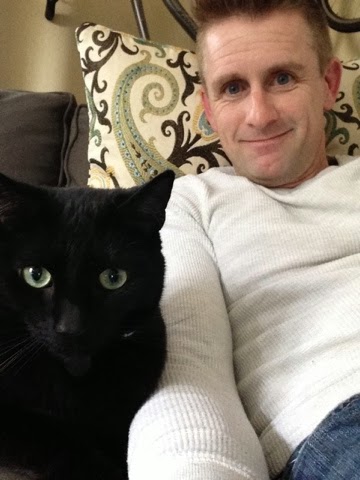11
Mar
Plastic People Part 2: Portrait Photography
In the previous blog post I looked at the possible international consequences of portraits that don’t accurately represent the person being photographed. Where is the line?
Back in the days of King Henry VIII, certain physical defects were glossed over by painters. As I said in the previous blog post, the omission of Anne of Cleaves’ small pox scarring almost cost Henry’s painter, Holbein, his life.
I think portraits should capture a subject’s personality, not a Hollywood definition of beauty. Throw out any rule you think you know about portraits. Look to each portrait as an opportunity to record the spirit of the individual.
Lucricia Borgia was painted holding a lamb. She was also infamous for having sex with her brother, poisoning her husband(s)? and other atrocities. While beautiful by any standard, perhaps she was evil? Or a woman trapped by circumstances, depends on who you read. Whatever, the portrait of her with her lamb recorded her public persona — and probably had little to do with reality. It was a fantasy.
There’s a trend right now toward fantasy in portraits: dressing your subjects into roles. I’m not sure what I think of that trend. On one hand, it smacks of THE LAMB, on the other, I’ve seen some cute images.
Portraits change based on what you’re trying to convey. Reality? Perception? What about a family portrait? What happens if the family is fighting right before the session? Screaming and kicking sand on each other’s faces, as you wait patiently on the beach for the tide to calm down. How do you shift the group into the perceived family ideal? Should you?
I’m not arguing to show everyone’s flaws out and open. You won’t be hired if you do that, and nor should you. I am suggesting to capture the human side, flaws and all. Don’t make them plastic. Show they are human. Decide if they are playing a role.
And not everyone needs to be Lucricia Borgia, or Anne of Cleaves.
Portraits tell a story using light, environment, and expression. Every once in a while, you get a client who refuses to smile. Boy, that makes life harder, doesn’t it? Not that every portrait needs to show it’s subject as a laughing hyenia, but — probably a pleasant expression might be nice.
By the way, usually the refusal to smile comes from two feelings: 1) the subject doesn’t like their teeth — or have any — or 2) they hate their smile. The solution for the first is easy — tell the person you’ll touch up anything they feel self conscious about in Photoshop. DON’T single out their teeth! If you can make sure you tell them, “you know, I touch up any person over the age of 8 in photos, so if there’s something you hate — like the horns growing from your forehead (this only works if they don’t have horns in their forhead) don’t worry about it. My lab is really good.” If they hate their smile (#2) it’s harder. You have to get them to LAUGH (or at least smile) at a joke or two. Usually launched from left field. I have found this works:
“You know, a smile is where your lips go up. Just saying.” Be READY. As soon as you mutter that? They will smile. It’s funny! Hush, it is. Try it.
Classes are taught semesters long on portraiture. I’m not pretending to offer any kind of depth here, just what’s in my brain. When I approach a portrait, I try to think of who the person is, and record them with that in mind, reality, perceived reality, or fantasy.
Who are you? Another question with a thousand responses, right? And the answer might vary based on time of day, time of year, or even what’s important at the moment. One day I’m an international event photographer. The next day, I’m that – but I’m also a partner, a husband, a cat owner, a business owner, a democrat, a theater lover, a book lover, and a sexual being.
UH OH, I can almost hear you think, he said the sex word. Yup. There’s a part of portraiture that needs to be — if not sexy — intimate. It’s that intimacy that should seep through into the image. “I know that person,” the viewer should think, “I like that person.” Not a literal knowing, a spiritual knowing. A connection of personality. If the photo achieves that? Then it’s a great portrait.
How does a photo achieve intimacy with the person viewing it? I’d argue it’s transmitted when the photographer has been able to develop a relationshp with the person they are photographing. It may be a quick relationship, built on a few seconds, or one that goes back years.
I call this “instant intimacy”, and it’s the basis of how I approach photography. It can also get me into trouble. That’s the subject of my next rant.
Politicians are great at instant intimacy. As a photographer, we need to learn that skill. This is from a shoot last week, a meet and greet. I try to capture the more casual moments, when possible, with the more traditional…
This falls into that category. I nearly peed myself I was laughing so hard.
Here’s a portrait I just did. More on this tomorrow. But part traditional, part fantasy, it’s a little different than I usually take.
I do a lot of (fake) green screen magazine covers for clients. What are they but a fantasy? Here a prop helps, along with a pose conveying closeness. Remember: these are done at events. I probably had 30-40 seconds to capture this image.
Everyone takes portraits. Selfies are just that, and some are super cute, relaxed portraits. OMG I need Botox. (No, not really. They will never touch me.)





